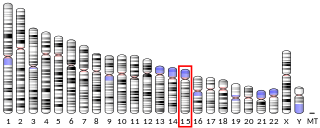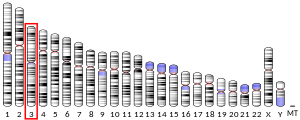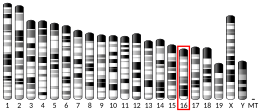
Thiamine transporter 2 (ThTr-2), also known as solute carrier family 19 member 3, is a protein that in humans is encoded by the SLC19A3 gene. SLC19A3 is a thiamine transporter.

Peptide transporter 1 also known as solute carrier family 15 member 1 (SLC15A1) is a protein that in humans is encoded by SLC15A1 gene. PepT 1 is a solute carrier for oligopeptides. It functions in renal oligopeptide reabsorption and in the intestines in a proton dependent way, hence acting like a cotransporter.

Sodium–hydrogen antiporter 3 also known as sodium–hydrogen exchanger 3 (NHE3) or solute carrier family 9 member 3 (SLC9A3) is a protein that in humans is encoded by the SLC9A3 gene.
A urea transporter is a membrane transport protein, transporting urea. Humans and other mammals have two types of urea transport proteins, UT-A and UT-B. The UT-A proteins are important for renal urea handling and are produced by alternative splicing of the SLC14A2 gene. Urea transport in the kidney is regulated by vasopressin.

Solute carrier family 22 member 2 is a protein that in humans is encoded by the SLC22A2 gene.

Solute carrier organic anion transporter family member 1B1 is a protein that in humans is encoded by the SLCO1B1 gene. Pharmacogenomic research indicates that genetic variations in this gene are associated with response to simvastatin. Clinical guidelines exist that can guide dosing of simvastatin based on SLCO1B1 gene variant using genotyping or whole exome sequencing.

Hyaluronan synthase 2 is an enzyme that in humans is encoded by the HAS2 gene.

Fibroblast growth factor 19 is a protein that in humans is encoded by the FGF19 gene. It functions as a hormone, regulating bile acid synthesis, with effects on glucose and lipid metabolism. Reduced synthesis, and blood levels, may be a factor in chronic bile acid diarrhea and in certain metabolic disorders.

Sodium–hydrogen exchanger 2 is a protein that in humans is encoded by the SLC9A2 gene.

Large neutral amino acids transporter small subunit 2 is a protein that in humans is encoded by the SLC7A8 gene.

Solute carrier organic anion transporter family member 1B3 (SLCO1B3) also known as organic anion-transporting polypeptide 1B3 (OATP1B3) is a protein that in humans is encoded by the SLCO1B3 gene.

Solute carrier organic anion transporter family member 1A2 is a protein that in humans is encoded by the SLCO1A2 gene.

Sodium-dependent phosphate transport protein 2B (NaPi2b) is a protein that in humans is encoded by the SLC34A2 gene.

Bile acyl-CoA synthetase is an enzyme that in humans is encoded by the SLC27A5 gene.

Solute carrier family 22 member 9 is a protein that in humans is encoded by the SLC22A9 gene.

Organic solute transporter beta, also known as OST-beta, is a protein which in humans is encoded by the OSTB gene.

Alkaline phosphatase, intestinal also known as ALPI is a type of alkaline phosphatase that in humans is encoded by the ALPI gene.

Solute carrier family 2, facilitated glucose transporter member 7 also known as glucose transporter 7 (GLUT7) is a protein that in humans is encoded by the SLC2A7 gene.

Monocarboxylate transporter 10, also known as aromatic amino acid transporter 1 and T-type amino acid transporter 1 (TAT1) and solute carrier family 16 member 10 (SLC16A10), is a protein that in humans is encoded by the SLC16A10 gene. SLC16A10 is a member of the solute carrier family.
Members of the organic solute transporter (OST) family have been characterized from a small bottom feeding species of fish called the little skate, Raja erinacea. Members have also been characterized from humans and mice. The OST family is a member of the larger group of secondary carriers, the APC superfamily.
















